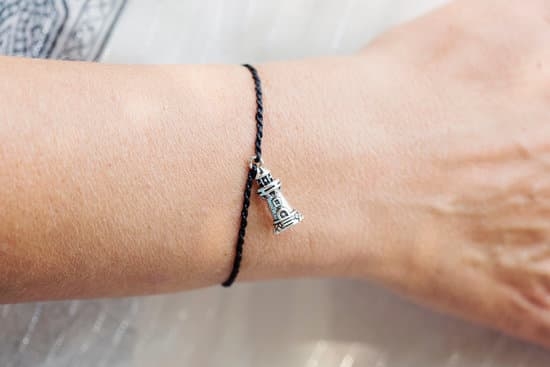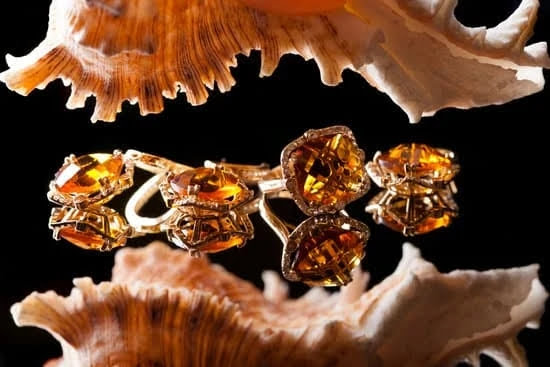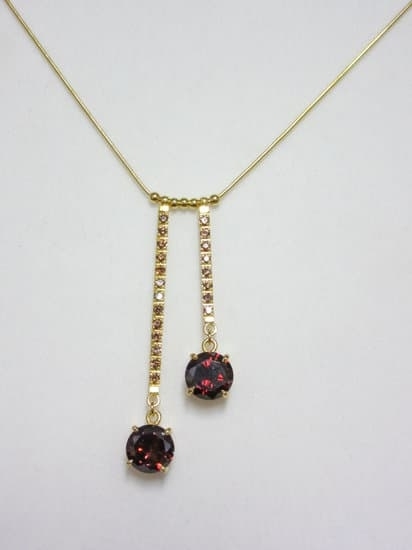The history of spoon jewelry dates back to the early 17th century where it began as a form of love token. This unique craft and artistry have evolved over the years into a popular form of jewelry making, with its own fascinating history and cultural significance. From its origins to the modern resurgence in fashion trends, spoon jewelry continues to captivate people with its timeless beauty and craftsmanship.
Tracing back to its roots, the origins of spoon jewelry tell a story of creativity and innovation. This article aims to explore the intricate process and techniques behind the art of spoon jewelry making, as well as unraveling its influence in different cultures and time periods. The symbolism and meaning behind spoon jewelry will also be unveiled, shedding light on its cultural and personal significance.
Furthermore, we will delve into the preservation and maintenance of these timeless pieces, offering tips for caring for spoon jewelry to ensure their longevity. Finally, we will take a closer look at notable designers and their contributions to the craft, as well as how this vintage trend is making a comeback in today’s fashion and style trends. Stay tuned for an exciting journey into the world of spoon jewelry.
The Origins of Spoon Jewelry
Spoon jewelry has a rich and fascinating history that dates back to the 17th century. The practice of turning ordinary silverware into wearable art pieces began in Europe, where artisans would repurpose old and unused spoons into intricate and unique jewelry. This innovative craft soon gained popularity and spread to different parts of the world, with each culture adding its own unique twist to the art form.
One of the most iconic periods in the history of spoon jewelry is the Victorian era, where sentimental and personalized jewelry was highly valued. During this time, spoon rings became a popular token of love and affection, often given as gifts between loved ones. The intricate designs and craftsmanship involved in creating spoon jewelry made them highly prized possessions, with each piece telling a story of its own.
As time passed, spoon jewelry evolved to encompass more than just rings. Necklaces, bracelets, and earrings made from repurposed spoons also became popular, further showcasing the versatility and creativity of this art form. Today, spoon jewelry continues to be a beloved trend among fashion enthusiasts and those who appreciate its historical significance.
| History Period | Main Developments |
|---|---|
| 17th Century | European artisans repurpose old spoons into wearable art pieces |
| Victorian Era | Spoon rings become popular as tokens of love and affection |
| Modern Times | Spoon jewelry evolves to include necklaces, bracelets, and earrings |
The Art of Spoon Jewelry Making
Spoon jewelry making is a unique and intricate craft that has been practiced for centuries. The process of creating jewelry from spoons involves a number of complex techniques that require skill and precision. From bending and shaping the spoon to adding embellishments and designs, the art of spoon jewelry making is truly a labor of love.
One of the key techniques used in spoon jewelry making is metalworking. This involves heating the spoon to make it more pliable, allowing the artist to bend and shape it into various forms such as rings, pendants, and bracelets. Metalworking also includes adding texture and patterns to the spoon, creating unique and beautiful designs that make each piece of spoon jewelry one-of-a-kind.
Another important aspect of spoon jewelry making is the incorporation of other materials such as gemstones, beads, or enamel. These additional elements add depth and character to the jewelry, elevating it from a simple spoon to a stunning work of art. Techniques such as stone setting, wire wrapping, and soldering are often used to seamlessly integrate these materials into the final piece.
In addition to metalworking and incorporating other materials, spoon jewelry making also involves polishing and finishing techniques to give each piece its luster and shine. It’s important for artisans to pay attention to every detail in order to create high-quality spoon jewelry that will stand the test of time. The history of spoon jewelry making spans many cultures and time periods, each with its own unique methods and approaches to this art form.
The Influence of Spoon Jewelry in Different Cultures and Time Periods
Throughout history, spoon jewelry has been a prominent art form in various cultures and time periods, each with its distinct style and significance. From ancient civilizations to modern-day fashion trends, the influence of spoon jewelry has left an indelible mark on the world of accessories and adornment.
Ancient Civilizations
Dating back to ancient Egypt and Roman times, spoon jewelry was crafted and worn as a symbol of wealth, status, and spirituality. Intricately designed pieces adorned with precious gemstones were often reserved for royalty and high-ranking individuals. The craftsmanship of these early spoon jewelry pieces reflected the skilled artistry of their creators and the cultural values attached to such accessories.
Victorian Era
The Victorian era saw a resurgence in the popularity of spoon jewelry, particularly in Europe and America. With intricate designs featuring floral motifs and ornate details, spoon jewelry became symbolic of sentimental love tokens and remembrance pieces. This period marked a turning point in the art form, as it evolved to incorporate more complex techniques and styles.
20th Century Revival
In the mid-20th century, there was a revival of interest in antique silverware, leading to a renewed appreciation for spoon jewelry. Artists began repurposing vintage silverware into unique and stylish accessories that appealed to a new generation. This revival led to an expansion of designs and techniques, blending traditional craftsmanship with modern aesthetics.
The influence of spoon jewelry across different cultures and time periods not only reflects its enduring appeal but also speaks to its adaptability in evolving fashion trends. From ancient symbolism to modern-day interpretations, spoon jewelry continues to captivate enthusiasts with its rich history and cultural significance.
Notable Spoon Jewelry Designers and Their Contributions to the Craft
Spoon jewelry has a rich history that is intertwined with the creativity and innovation of notable designers who have made significant contributions to the craft. These designers have played a crucial role in shaping the artistry and aesthetic appeal of spoon jewelry, making it a beloved and timeless form of wearable art. From pioneering new techniques to reimagining traditional designs, these individuals have left an indelible mark on the world of spoon jewelry.
Pioneering Innovations in Spoon Jewelry
Throughout history, there have been several notable designers who have revolutionized the art of spoon jewelry through their innovative techniques and creative vision. One such pioneer is Art Smith, an influential African American jewelry designer known for his modernist approach to spoon jewelry making. Smith’s avant-garde designs captured the attention of fashion icons and art enthusiasts alike, solidifying his legacy as a trailblazer in the world of spoon jewelry.
Cultural Influences and Inspirations
Other renowned designers such as Mary Gage and Alphonse LaPaglia drew inspiration from their cultural heritage to create exquisite spoon jewelry pieces that reflected their unique artistic perspectives. Gage’s designs were influenced by her Native American heritage, incorporating symbolism and motifs from indigenous traditions into her work. Similarly, LaPaglia’s Italian background inspired him to infuse his designs with elements of Italian craftsmanship, resulting in intricately detailed and ornate spoon jewelry pieces.
Legacy and Influence
The enduring legacy of these influential designers continues to shape the world of spoon jewelry today, inspiring contemporary artisans to push the boundaries of creativity and craftsmanship. Their contributions have not only enriched the history of spoon jewelry but also elevated it to a respected form of artistic expression.
As appreciation for vintage fashion trends grows, the work of these notable designers serves as a poignant reminder of the enduring appeal and significance of spoon jewelry in both historical and modern contexts.
The Symbolism and Meaning Behind Spoon Jewelry
Spoon jewelry holds a unique place in the world of accessories, not only for its beautiful craftsmanship but also for the symbolism and personal significance it carries. The history of spoon jewelry is deeply intertwined with cultural traditions and personal meanings, making it more than just a fashionable adornment.
The significance of spoon jewelry can be traced back to ancient times, where spoons held great cultural and ceremonial importance in various civilizations. This historical context adds layers of meaning to modern-day spoon jewelry, making it a timeless piece that symbolizes heritage, tradition, and craftmanship.
In many cultures, spoon jewelry is also believed to carry specific meanings and symbols. For example, in some societies, spoons are associated with nurturing and nourishment, making spoon jewelry a symbol of care and compassion. Understanding these cultural meanings adds depth to the appreciation of spoon jewelry beyond its aesthetic appeal.
- Spoon Jewelry Symbols and Meanings:
- Heart-shaped designs: symbolize love and affection
- Floral patterns: represent growth and beauty
- Twisted handles: signify resilience and strength
As individuals incorporate spoon jewelry into their personal style, they often attribute their own meanings to these pieces. Whether it’s a cherished family heirloom or a handcrafted creation that resonates with their values, the personal significance of spoon jewelry adds an emotional connection that goes beyond fashion trends.
Preservation and Maintenance of Spoon Jewelry
Spoon jewelry has a rich history, dating back to the 17th century when it was first crafted by blacksmiths and silversmiths. As these artisans repurposed spoons and other silverware into jewelry, they created timeless pieces that are still treasured today. To ensure that your spoon jewelry continues to shine for years to come, proper preservation and maintenance are crucial. Here are some tips for caring for these timeless pieces:
1. Cleaning: Regularly clean your spoon jewelry with a soft cloth to remove any dirt or tarnish. For stubborn tarnish, you can use a silver polishing cloth or a gentle silver polish specifically designed for jewelry.
2. Storage: When not wearing your spoon jewelry, store it in a cool, dry place to prevent tarnishing. Consider placing it in a jewelry box or pouch to protect it from scratches and oxidation.
3. Avoid Harsh Chemicals: Keep your spoon jewelry away from harsh chemicals such as perfumes, lotions, and hairsprays, as these can cause damage to the metal and gemstones.
4. Professional Maintenance: If your spoon jewelry has intricate details or gemstones, consider taking it to a professional jeweler for regular maintenance and cleaning.
By following these simple tips, you can ensure that your spoon jewelry remains as stunning as the day you acquired it. With proper care and maintenance, these timeless pieces will continue to be cherished for generations to come.
The history of spoon jewelry is deeply intertwined with craftsmanship and artistry dating back centuries ago. Its unique origins make it an important part of cultural heritage around the world.
The Modern Resurgence of Spoon Jewelry
In conclusion, the history of spoon jewelry is a fascinating journey that takes us through its origins, evolution, and cultural significance. This unique craft and artistry have been traced back to various time periods and cultures, demonstrating its enduring appeal and relevance. From its early beginnings to its modern resurgence in fashion and style trends, spoon jewelry continues to captivate enthusiasts with its symbolism and intricate designs.
The influence of spoon jewelry in different cultures and time periods has showcased its adaptability and versatility as a wearable art form. Notable designers have contributed to the craft, adding their own creative flair and vision to create timeless pieces that resonate with individuals on a personal and cultural level. The symbolism and meaning behind spoon jewelry add an extra layer of significance, making each piece not just a fashion accessory but also a reflection of heritage and personal expression.
With the modern resurgence of spoon jewelry in fashion and style trends, we see a renewed appreciation for this vintage trend. As individuals seek out unique and meaningful accessories, spoon jewelry offers a distinct alternative that combines history, craftsmanship, and individuality. As we continue to embrace the revival of this timeless trend, it’s important to preserve and maintain these pieces for future generations to appreciate the rich history and artistry behind spoon jewelry.
Frequently Asked Questions
What Is the Story Behind Spoon Rings?
The story behind spoon rings dates back to the 17th century when servants would steal silverware from their wealthy employers and create rings out of them. This has evolved into a symbol of love, commitment, and creativity.
What Does a Spoon Necklace Symbolize?
A spoon necklace symbolizes similar principles as the spoon ring – love, commitment, and creativity. It can also represent resourcefulness and the ability to transform everyday objects into something beautiful and meaningful.
What Does the Spoon Ring Mean Spiritually?
Spiritually, the spoon ring is often associated with nurturing and caring for oneself or others. Some believe it brings positive energy, protection, and good fortune to the wearer. It can also be seen as a reminder to feed the soul with positivity and love.

Welcome to my jewelry blog! My name is Sarah and I am the owner of this blog.
I love making jewelry and sharing my creations with others.
So whether you’re someone who loves wearing jewelry yourself or simply enjoys learning about it, be sure to check out my blog for insightful posts on everything related to this exciting topic!





